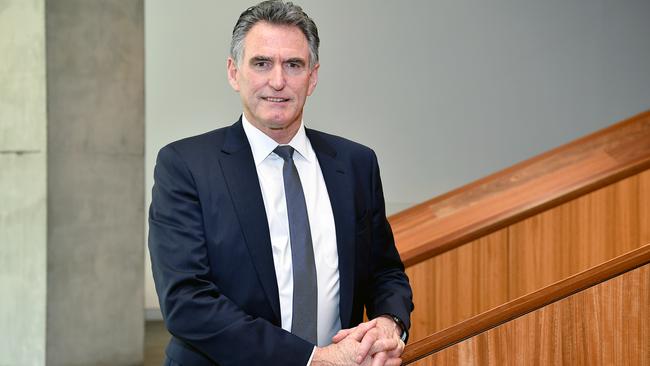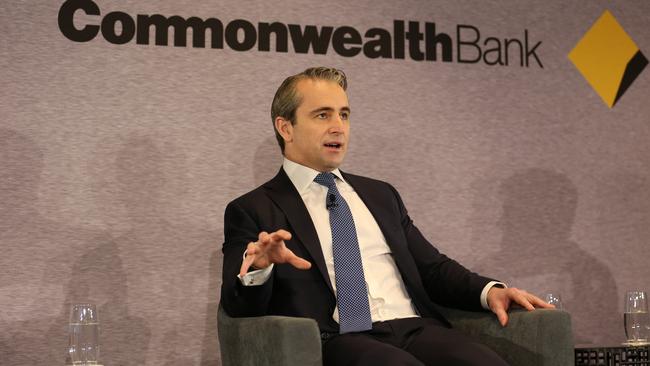MLC sale marks end of an error as banks exit wealth management
Two decades after the major banks piled into wealth management, the sector has completed one of the great strategic U-turns.

Two decades after the major banks piled into wealth management in an $18bn splurge, the sector has completed one of the great strategic U-turns in local corporate history after NAB’s sale of MLC.
The purchases of Colonial by Commonwealth Bank, BT by Westpac, ING by ANZ and MLC by NAB were united by a common purpose — using the sector’s distribution muscle to cross-sell wealth products and supercharge mandated superannuation flows.
The recent round of shameless exits also have a common purpose: simplicity.
“The sale of MLC will enable NAB to prioritise investment and focus on executing our refreshed strategy of delivering simpler, more streamlined products and processes for our customers and colleagues,” NAB chief executive Ross McEwan said in a statement on Monday.
NAB’s $1.44bn deal with IOOF is expected to be completed by the middle of next year, and will lift the bank’s common equity tier one capital ratio by 30 basis points to 11.9 per cent.
More capital is never a bad thing in the current environment, particularly with an expected surge in soured loans as COVID-19 assistance packages wind down.
McEwan, though, will also invest in his leading business banking franchise, which is under perpetual attack by its big rivals. To be fair to the NAB chief and his counterparts, simplicity in the current environment makes a lot more sense than getting-bigger-for-the-sake-of-it in the noughties.
An internal APRA document which came to light in the financial services royal commission exposed one of the fundamental flaws — intractable conflicts of interest — in the banks’ strategy to manufacture and sell wealth and insurance products.
The document was a note from a meeting in early 2018 between CBA chief executive Matt Comyn and the Australian Prudential Regulation Authority.
A remarkably frank Comyn told the regulator that the so-called bancassurance model was broken, had “categorically failed”, and CBA was embarking on a sell-off, although it would continue to employ some financial advisers.

While it was the wrong course to exit financial advice and not provide the service to customers, he said the current model generated “too much conflict of interest”.
Senior counsel assisting the royal commission Rowena Orr asked the CBA chief if it would be feasible for banks in Australia to offer products beyond their core businesses of retail and business banking in a sustainable way that did not pose unacceptable risks to customers.
It was possible, he said, but CBA had decided to concentrate on the core.
“Of course, the alternative models where (wealth and banking) remain integrated are of course viable, but those conflicts need to be managed in a better way than we have been able to do in the past,” Comyn said.
While NAB announced its decision to offload MLC in 2018, the sale of the business to IOOF on Monday was the last of the big wealth management divestments by the major banks.
IOOF also announced the acquisition of ANZ’s renamed OnePath pensions and investments business for $980m in 2017, with the deal completed earlier this year at the lower price of $850m.
CBA last May sold 55 per cent of Colonial First State to US private equity firm Kohlberg Kravis Roberts for $1.7bn, valuing 100 per cent of the business at $3.3bn.
Westpac dealt with the remaining piece of the wealth jigsaw, BT Financial Group, in March 2019 by merging the operation with its retail and business banks and exiting financial advice.
Misconduct in the wealth industry highlighted in the royal commission, fuelled by structural and remuneration conflicts of interest, could ultimately set the industry back $10bn, including the cost of the remediation programs.
This will be carried by the sellers of the businesses, not the new owners.
UBS analyst Jon Mott said in a note on Monday that wealth had failed to deliver the promised rivers of gold for the big four.
Indeed, the wealth businesses had delivered an exceedingly modest 4-5 per cent return on equity under bank ownership.
The writing was on the wall a long time before the recent round of divestments.
NAB chairman Phil Chronican said in 2012 when he was CEO of ANZ Australia that a decade of bank ownership of wealth businesses had shown that profits were much more cyclical than anticipated.
“(Wealth) should be a reasonably high return-on-equity business, and has higher operational risk but obviously lower credit risk,” Chronican said.
“The issue is making sure it’s managed for profit and not just for volume.
“Also, it’s a business that’s highly leveraged to economic conditions, so with relatively fixed costs everything looks rosy when markets go up because fees go up.
“But if your costs are relatively fixed and markets go down, you have quite a contraction in profit.”
Realistically, divestment of MLC was the only option for NAB.
But you couldn’t say that about its acquisition in 2000.







To join the conversation, please log in. Don't have an account? Register
Join the conversation, you are commenting as Logout